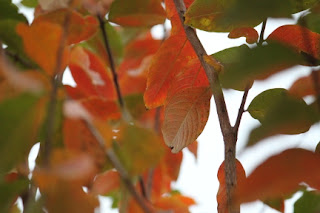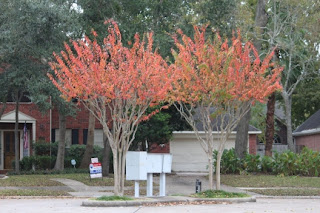That's the name of this beautiful amaryllis. You may remember that I heroically limited myself to one amaryllis bulb this year at the Garden Club of Houston's
Bulb and Plant Mart. I'm in the habit of forcing the amaryllis bulbs for the holiday season, then planting them in the garden to bloom forever more. This usually results in blooms for Thanksgiving (if I've chosen a South African variety) or Christmas (if I've chosen a Dutch variety). 'Charisma,' as it turns out, is a Dutch amaryllis, but bloomed just in time for the Thanksgiving holiday -- and I was grateful.
 |
| Amaryllis 'Charisma' |
Truthfully, I never consider whether the bulbs are European or South African, though. I look for a color that I don't already have, and, to some degree, for height. I like shorter, fatter stems that might not have to be staked once they are blooming on their own in the garden.
Growing amaryllis is as tradition in my family that goes back a century or more. Some of the bulbs in my garden were handed down from my great-grandmother. These long-lived plants are easy to propagate by division and also set seed, so once established, an amaryllis bed can carry on for a long, long time. So whenever an amaryllis gardener in my family has to move, we dig up the bulbs before the house ever goes on the market and move them to a safe harbor. Then we plant them in a new home, keeping the circle unbroken, if you will.
 |
| Amaryllis 'Charisma,' right before fully open |
I have probably 150 or more individual amaryllis plants in my backyard, which is entirely too many. I'm breaking all the garden design rules for texture and leaf shape. I have one: long, sword-shaped foliage, which indicates a severe case of bulb mania. I sometimes think I should try to restrain myself, maybe plant something else, maybe give away some of the amaryllis. After all, they only bloom once a year and it would be nice to have something showy in other seasons, too. But when all is said and done, I can't resist. This is the first year, in fact, that I've been able to stop at just one!
Oh, well. When I am all covered up in amaryllis leaves, just put a plaque on the front door and we'll call it a living memorial to my generations of gardening women forebears.

























































.jpg)



